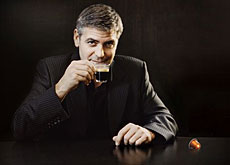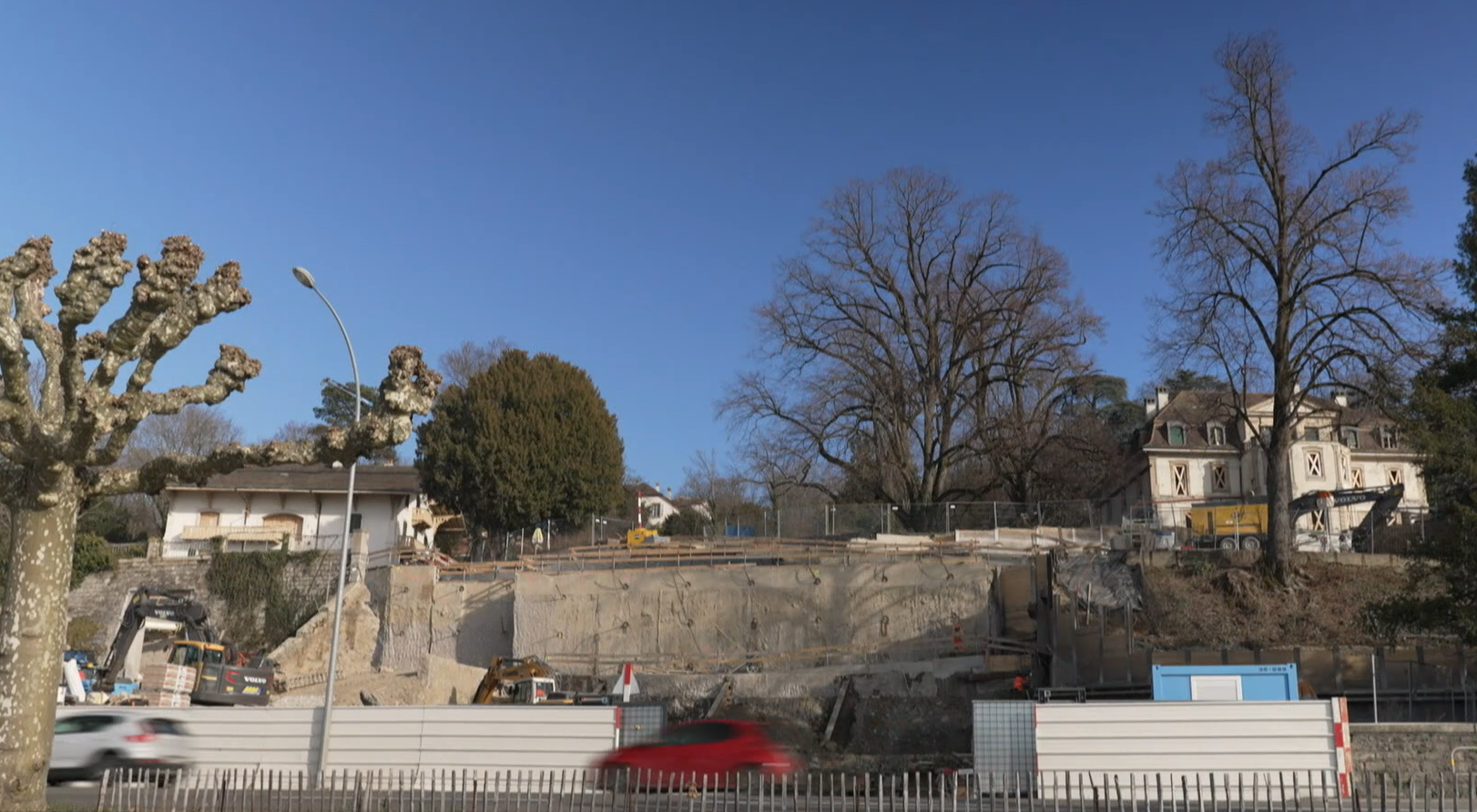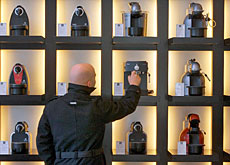Coffee exhibition stirs seductive passions

Coffee has long had a sexy image in adverts – a recent example is the Nespresso campaign featuring smouldering Hollywood actor George Clooney.
But as an exhibition at Zurich’s Johann Jacobs Museum – which is devoted to coffee’s cultural history – shows, awareness of the drink’s sensual appeal goes back several hundred years.
For many people coffee is an integral part of daily life and a good kick-start to the morning. Coffee shops and cafés now offer anything from the humble espresso to a double latte macchiato with caramel.
Monika Imboden, curator of “Coffee: a tale of irresistible temptation”, is well aware that most people might struggle to see the erotic side of one of the world’s most popular brews.
“The association comes first of all from the production process, for coffee to be drinkable it has to go through heat a few times, through fire, and fire is the symbol of passion and temptation,” she told swissinfo.
When coffee first came to Europe around 400 years ago there were very few hot drinks. Wine, beer, mead and water were drunk lukewarm.
A hot drink, according to the thinking of the time, was supposed to get pulses racing. Although, as is demonstrated by an elegant lady in one of the exhibition’s paintings, there were ways around this.
“People used to tip coffee into a saucer so it could cool down… and then they drank it out of the saucer, which today is terribly frowned upon,” said Imboden.
Wide appeal
Roasting, which has to take place at more than 220 degrees Celsius, creates another distinctively tempting aspect of coffee: its smell.
Coffee’s characteristic aroma actually comprises nearly 1,000 distinct elements, ranging from vanilla to earthy scents. But coffee’s appeal does not stop there.
Porcelain figures from the 18th century suggest that enjoyment of coffee may have played a role in courtly gallantry.
Thus a lady neglects her cup of coffee to steal a kiss, another waits for her lover to appear, coffee in one hand, red rose in another.
Coffee services often depicted mythical or exotic scenes, featuring love gods Eros or Venus.
Flirting
Flirting was another aspect, as can been seen in some of the paintings of coffee houses on display.
In the 19th century these were often respectable establishments, mostly frequented by men. The only woman was usually the cashier. Paintings show her as young and pretty, but highly respectable – a large counter keeps any admirers at a safe distance.
In the latter part of the century, it became acceptable for women to go to coffee houses as well.
“They were places where women could go in twos and exchange glances with the other sex without it being frowned upon,” Imboden told swissinfo.
Some coffee houses were, however, places for prostitution and merriment.
But a series of drawings of women by French artist Henri de Toulouse-Lautrec shows the harsh reality behind the gaiety of café dansants in Paris.
Another set, by the German George Grosz, depicts ugly and sometimes explicit figures sitting in cafés, a critical look at society’s pessimism around the First World War.
The George effect
Perhaps the most obvious association between coffee and sex came in the 1950s, when advertising started to capitalise on the drink’s seductive side. A selection of adverts is shown at the exhibition.
Strangers flirt over a cup of coffee or new couples are formed. Fires roar in the background. Aromas tempt. The drink seems of secondary importance.
But not always, as George Clooney finds out in the Nespresso advert when he eavesdrops on a conversion between several women as they enjoy their coffees.
“It seems that these attributes – rich, sensual, intense, unique – are referring to him but they are actually talking about coffee,” said Imboden.
A case to show that coffee really does have seductive powers.
swissinfo, Isobel Leybold-Johnson in Zurich
The Johann Jacobs Museum, located in Zurich, opened in 1984 as part of the Johann Jacobs Foundation.
The Jacobs family founded the Jacobs Kaffee brand in the 19th century. It is now part of Kraft.
The exhibition “Coffee: a tale of irresistible temptation” runs until February 24, 2008.
Museum opening hours: Friday: 2-7pm, Saturday: 2-5pm, Sunday: 10am-5pm.

In compliance with the JTI standards
More: SWI swissinfo.ch certified by the Journalism Trust Initiative










You can find an overview of ongoing debates with our journalists here . Please join us!
If you want to start a conversation about a topic raised in this article or want to report factual errors, email us at english@swissinfo.ch.